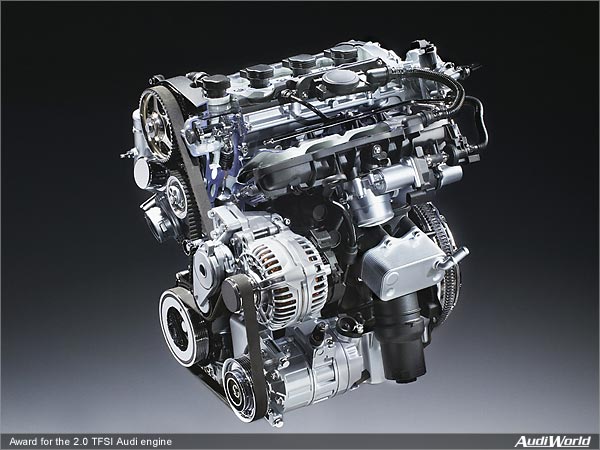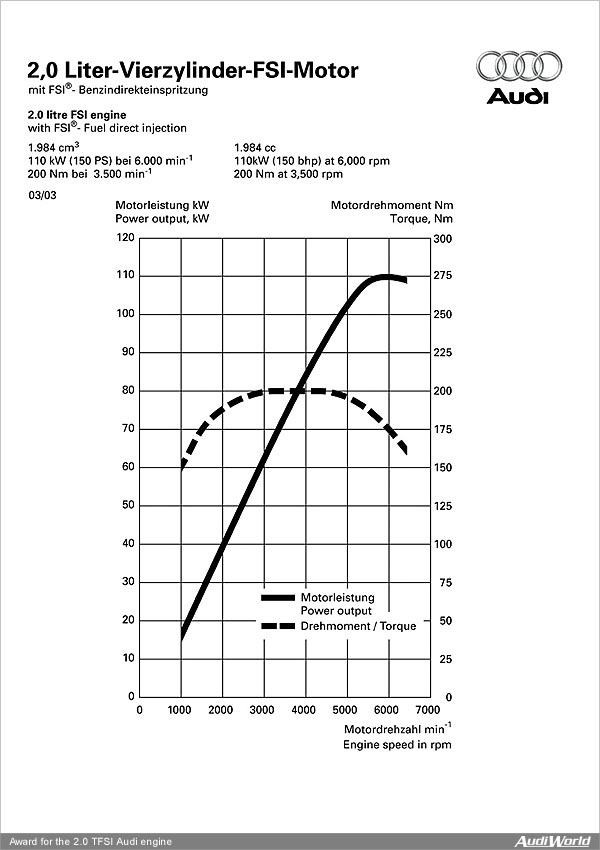Award for the 2.0 TFSI Audi Engine

Audi’s pioneering achievements in the domain of petrol injection technology are not restricted to success on the racetrack. The 2.0 TFSI has now been awarded the title of “Engine of the Year”. Audi is the first manufacturer in the world to combine petrol direct injection with turbocharging in the spheres of both motor racing and volume production. The 2.0 TFSI embarked on its success story in the Audi A3 Sportback. It is now also on offer in the Audi A4 and A6. It is available in three performance versions ranging from 170 bhp to 220 bhp. The 200 bhp version, which is used in the Volkswagen Golf GTI, provides a level of propulsive power that truly befits that car’s status. The jury praised the Audi engine, which dominates the engine displacement category from 1.8 to two litres, for its good “balance between technology, performance, economy and environmental acceptability”. The jurors were also impressed by its pulling power and high level of everyday suitability. The exceptionally broad torque plateau on the one hand permits a fuel-efficient driving style with few gearshifts, and on the other hand means that only light accelerator action is needed to produce assertive thrust and a spontaneous unleashing of power. With FSI technology, fuel is injected directly into the combustion chamber. The injector, located on the admission side in the cylinder head, is served by a high-pressure pump driven by the camshaft and a pressure reservoir shared by all cylinders – the common rail system. The injector regulates fuel delivery with millisecond precision, at injection pressures of up to 110 bar. By comparison, a manifold injection system operates at between four and six bar. Two balancing shafts rotating at double the speed of the crankshaft compensate for the engine’s inertial forces and also achieve a high standard of acoustic comfort. The results are outstanding for a four-cylinder engine. The intake manifold integrates the charge movement flaps, the position of which is adjusted by a continuous-action pilot motor. The movement of the airflow, or tumble, can thus be controlled optimally on the basis of the engine-speed and load conditions. The fuel-air mixture is distributed homogeneously within the combustion chamber. A spontaneous power build-up and an agile response at every point along the broad engine-speed band are the positive consequences. The four-valve cylinder head with low-friction roller cam follower valve gear has an inlet duct geometry that has been modified from that of the naturally-aspirated FSI engine, producing even higher tumble values. This results in both greater refinement and superior knock resistance, and therefore improved efficiency. The result is that the turbo engine achieves a compression ratio of 10.5:1, a figure that is otherwise typically achieved only by naturally-aspirated engines. This, coupled with the advantages of petrol direct injection, plays a crucial role in boosting the thermodynamic efficiency compared with both manifold injection engines and conventional turbo engines.
|

